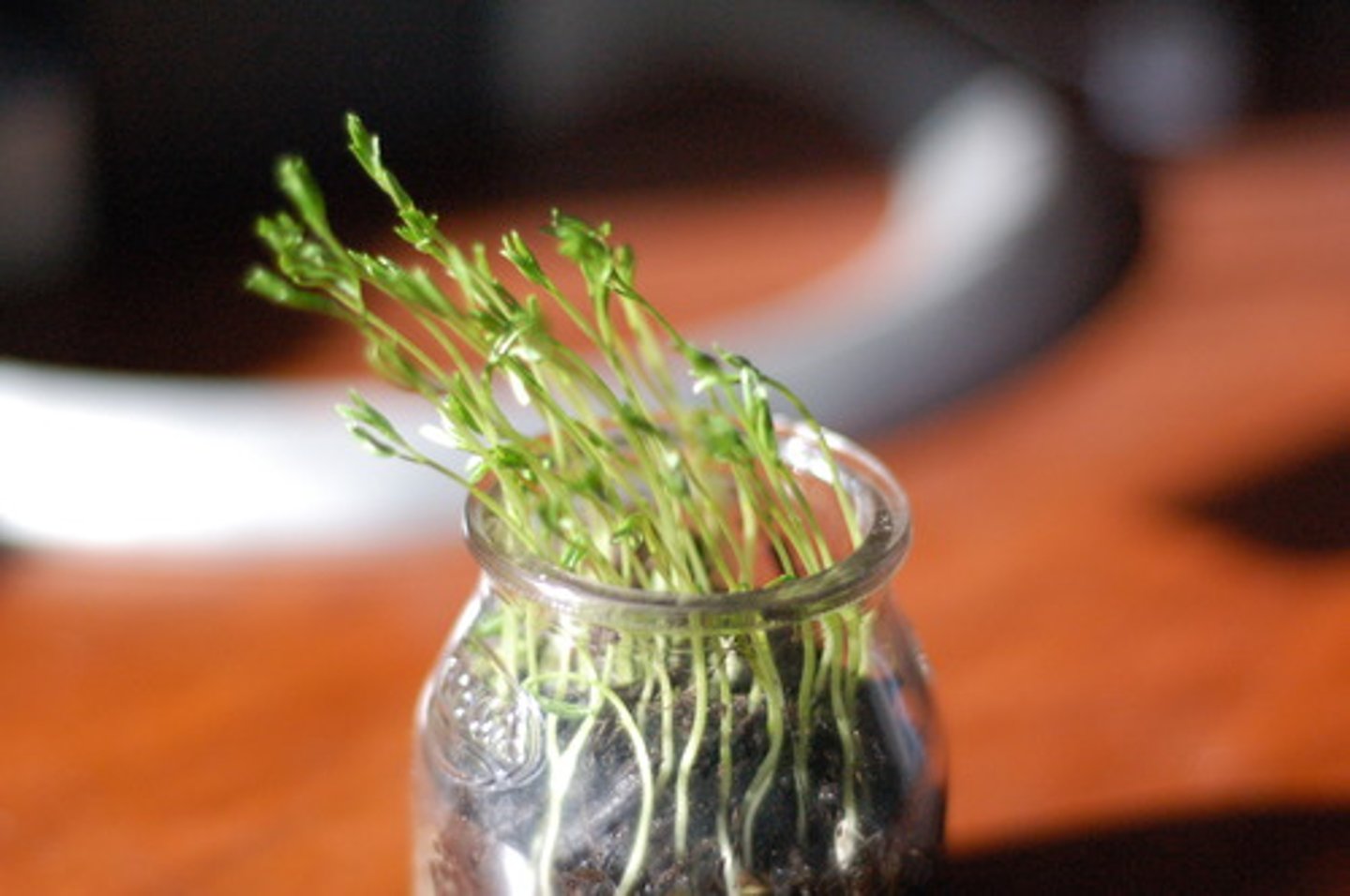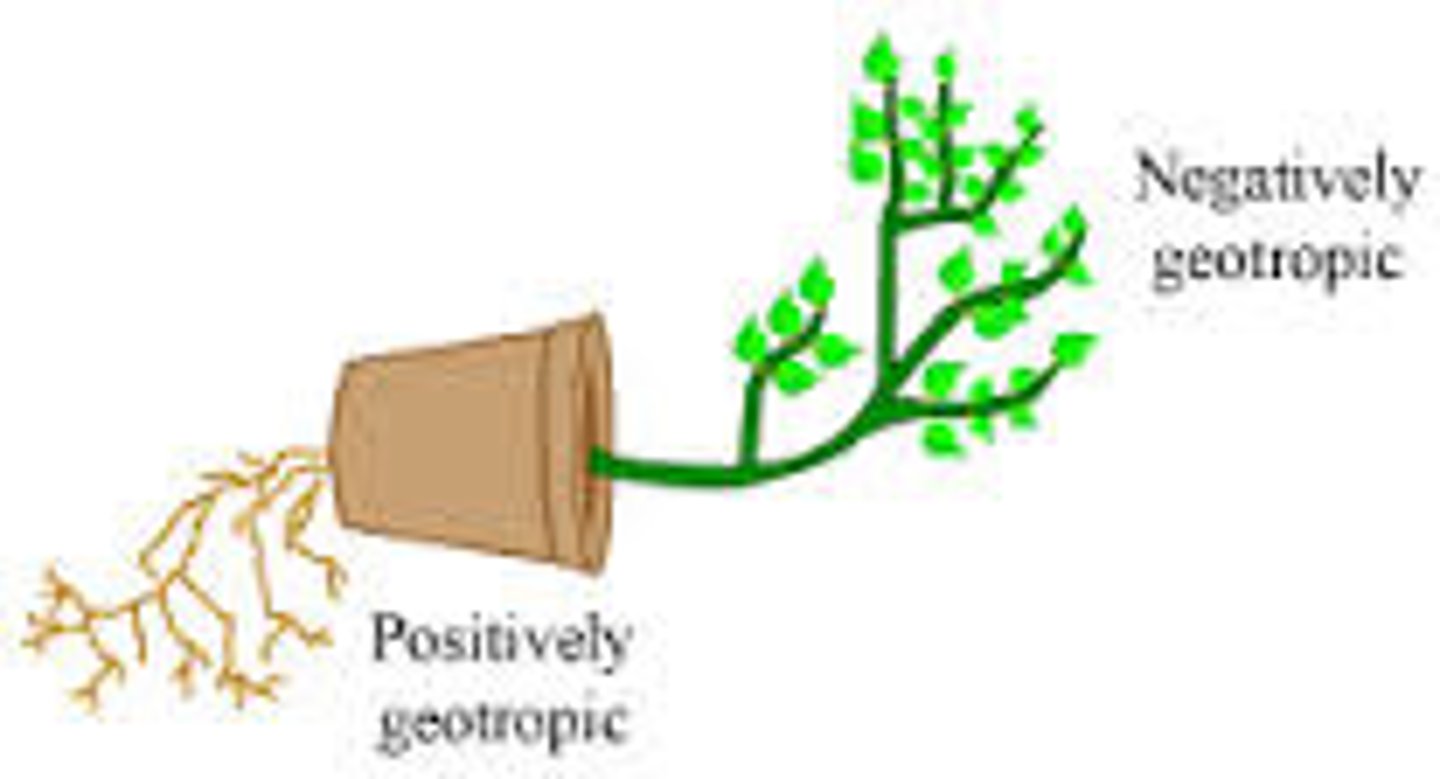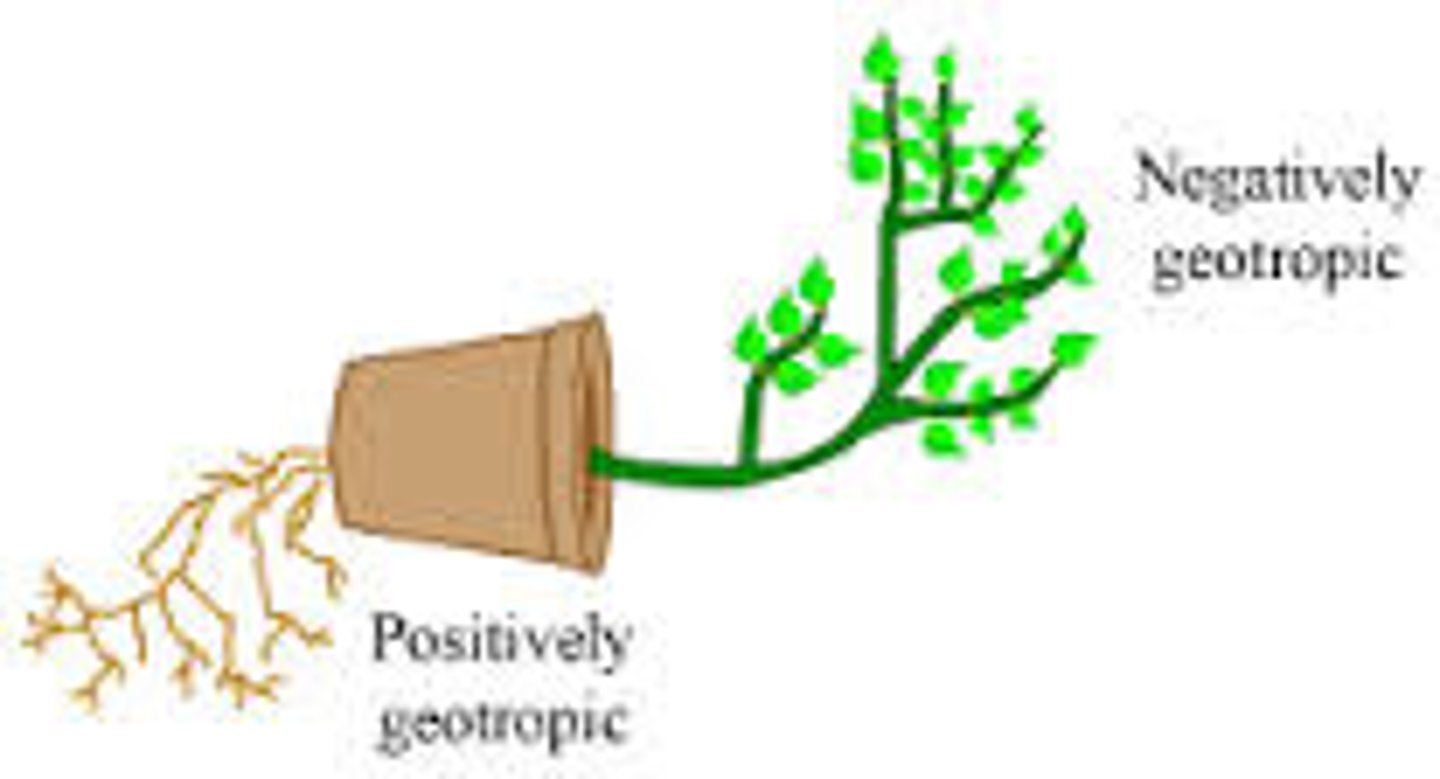Types of Plant Responses
1/13
There's no tags or description
Looks like no tags are added yet.
Name | Mastery | Learn | Test | Matching | Spaced |
|---|
No study sessions yet.
14 Terms
Why is it important for plants to respond to the environment?
- To avoid abiotic stress
- To avoid herbivory
- To maximise photosynthesis
- To help ensure germination/fertilisation
Phototropism
A plant's growth response to light

Positive Phototropism
- Growth towards light
- Found in the stem tips or shoots
- It maximises light for photosynthesis
Negative Phototropism
- Growth away from light
- Found in roots
- Prevents roots from drying out

Geotropism
A plant's growth response to the Earth's gravitational field

Positive Geotropism
Plant roots grow towards the gravitational attraction (down)

Negative Geotropism
Plant stems (shoots) grow away from the gravitational attraction

Hydrotropism
A plant's growth response to the Earth's water
Thigmotropism
A plant's growth response to touch

Chemical Defences
- Alkaloids
- Pheromones
Alkaloids
- Very bitter tasting
- Nitrogenous compounds found in many plants
What does alkaloids include?
Caffeine and nicotine.
Caffeine is toxic to fungi and insects, and nicotine is a toxin produced in the roots of tobacco plants that is poisonous to insects.

Pheromones
Chemicals made by organisms that affect the behaviour of other/same species

An example of pheromones
When corn plants are being eaten by caterpillars, they can produce chemicals which attract parasitic wasps. These wasps lay their eggs on the caterpillars, which eventually causes the caterpillars death.